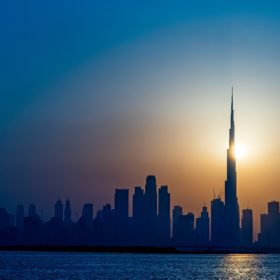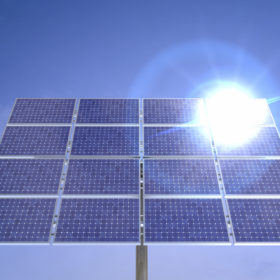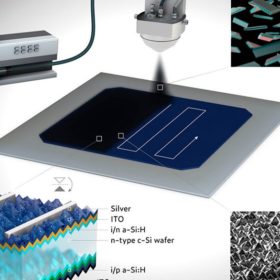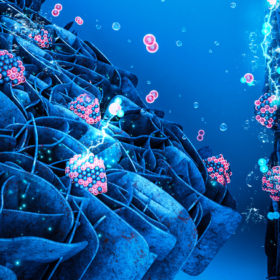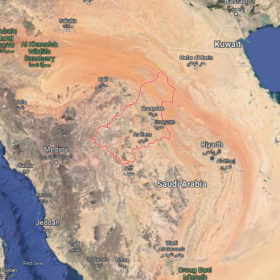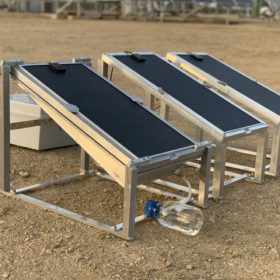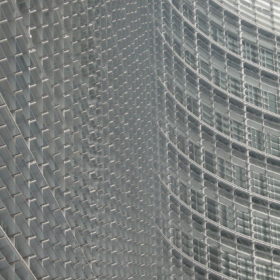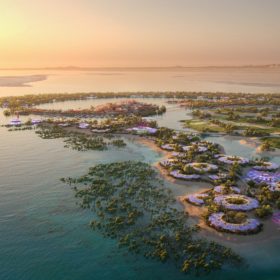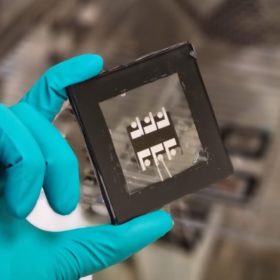Competitive, renewable hydrogen from the Middle East and North Africa
ATA Insights held a webinar on April 25 that focused on green hydrogen opportunities in the Middle East and North Africa.
Temperature-dependent model to calculate solar LCOE
Developed by researchers in Saudi Arabia, the novel approach considers both the temperature-dependent power yield and the solar module time to failure (TTF), among other factors. According to its creators, the model can be applied to all kinds of module and cell technologies.
KAUST researchers achieve 20.1% efficiency in heterojunction solar cell based on 2D MXenes electrodes
The solar cell is based on the titanium carbide MXene and is claimed to have retained around 99% of its initial efficiency for more than 600 days of ambient air storage. The device was built using spray coating to directly deposit the titanium carbide flakes on the cell’s rear side.
The Hydrogen Stream: Metal foam for low-cost green hydrogen generation
Researchers from Saudi Arabia’s King Abdullah University of Science and Technology have presented the results of a low-cost method of generating carbon-free hydrogen. In other news, Norwegian fuel cell producer Nel ASA said it was ready to increase its electrolyzer production capacity to meet the European Union’s raised ambitions for renewable hydrogen, while oil giant Petronas Eneos announced plans to set up a hydrogen production plant in Indonesia.
Saudi minister appears to signal 15GW, two-year clean energy push
Abdulaziz bin Salman bin Abdulaziz Al Saud, present at the signing of a power supply deal related to the 700MW Ar Rass solar project, said the kingdom is planning a massive renewables drive by the end of next year, according to energy company and Ar Rass developer Acwa Power.
Solar parks could help to increase rainfall in arid regions
New modeling suggests that the reduction in albedo caused by large-scale solar plants could double rainfall in the Red Sea coastal plain of Saudi Arabia.
Fully PV-driven system to produce water, electricity, crops
Researchers in Saudi Arabia have fabricated an integrated fully PV-powered system to extract fresh water from the atmosphere. The system uses excess heat from the solar modules to evaporate and condense water that can then be used to grow crops. Part of the water is also used to cool down the solar modules through an active cooling technique.
Masdar-EDF joint venture bid for more independence
The Emerge operation established by the two companies operates on-site solar panels for companies in the UAE and Saudi Arabia.
World’s largest off-grid battery project reaches financial close
A consortium of developers led by ACWA Power has secured financing for the Red Sea project, on the west coast of Saudi Arabia, which is set to feature a 320MW solar array and a 1.3GWh off-grid battery.
Damp heat–stable perovskite solar cell with 24.3% efficiency
Developed by scientists in Saudi Arabia, the perovskite cell was able to retain over 95% of its initial efficiency after 1,000 hours at damp-heat test conditions. The cell was fabricated with a substrate made of glass and indium tin oxide (ITO), 2D layers, a 3D perovskite layer, an electron-selective layer, a buffer layer based on bathocuproine (BCP), and silver metal contact.
